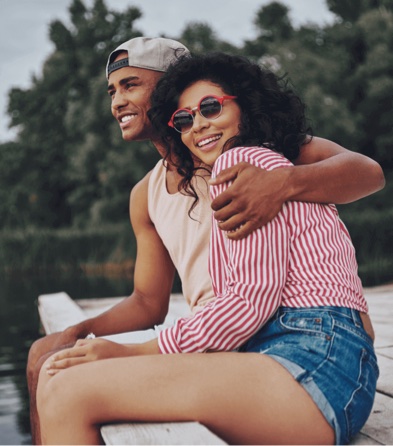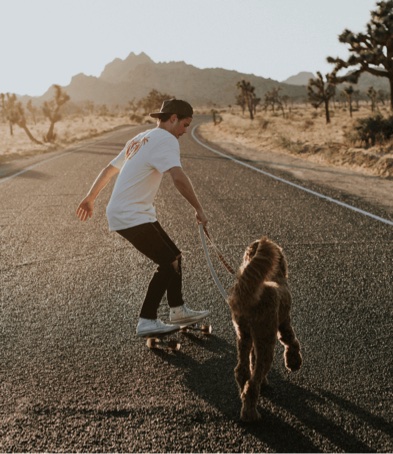5 Things to Do in Little Tokyo, California
Never been before? We’ll be your trustee Little Tokyo guide with a day’s worth of fun things to do in Little Tokyo.

For those interested in L.A.'s deep Black history and present, here's a breakdown of the City of Angels' historically Black cities.
The City of Angels was founded on September 4, 1781, by 44 settlers known as “Los Pobladores.” What is usually excluded from this information is that 26 of the settlers were of African descent. Indeed, L.A. has more Black history than you think: Pío de Jesús Pico, the first governor of the area, had roots tracing back to Africa; Paul R. Williams—a well-known Black architect who designed many houses and iconic commercial buildings—was a major contributor to the appeal of the local cityscape.
Los Angeles County has witnessed a dynamic surge in Black-owned enterprises, bringing an infusion of energy and creativity to the region, evidenced by striking murals and vibrant cultural expressions. The African American community has played a pivotal role in enriching the city with its profound history and remarkable contributions. Influential Black figures have been instrumental in shaping not only the cultural landscape of Los Angeles but also that of California at large. Today, Los Angeles stands out as a leading city where the African American community flourishes, and the preservation of historically Black neighborhoods remains a testament to their enduring legacy and impact.

View Park-Windsor Hills has the largest percentage of African-American residents in Los Angeles—86.5 percent of the community, to be exact. Founded in the 1930s, it is one of the largest, wealthiest, best-educated, and geographically contiguous historically Black neighborhoods in the Western U.S. Notable figures such as Ray Charles, Tina Turner, and Meghan Markle have lived in View Park-Windsor Hills.
Bordered by Manchester Square to the north and Westmont to the south, Gramercy Park has the second largest population of Black residents—86.4 percent of the neighborhood is Black. Jesse Owens Community Regional Park is found in this neighborhood; the park was named after four-time gold medalist Jesse Owens, one of the greatest and most famous athletes in track and field history.

Does your business rank among the best in California?
nominate a businessLearn more about our selection criteria and vetting process.
Leimert Park has served as a hub for Black culture ever since the neighborhood was developed in the 1920s. Located in the South Los Angeles region, Leimert Park is regarded as the cultural heartbeat of Black L.A. The core of the neighborhood is Leimert Park Village. Commonly compared to Harlem, the village is abundant with blues and jazz clubs, poetry reading venues, and theaters for musical performances. The African-American neighborhood in Los Angeles is also home to the longest-running hip-hop open mic in the world: Project Blowed. With 79.6 percent of residents being Black, Leimert Park continues being the center of historical and contemporary African-American art, music, and culture.

Rappers Nipsey Hussle and Ice Cube have both lived in Baldwin Hills/Crenshaw, where 73.1 percent of the neighborhood is Black. Baldwin Hills/Crenshaw is lined with beautiful homes populated by proud, hard-working African-American families. Residents of this Los Angeles Black neighborhood live within walking distance from the Baldwin Hills Scenic Overlook and Kenneth Hahn State Regional Park.
Ranking third among the top 10 richest Black communities in the U.S., Ladera Heights is an affluent area with a Black population of 71 percent. First developed in the 1940s, this Black neighborhood in Los Angeles has been home to Frank Ocean; Tyler, the Creator; Vanessa Williams; and famous female athlete Lisa Leslie. As one of the most expensive neighborhoods in L.A., Ladera Heights is a top choice for well-to-do families.
One of the oldest neighborhoods in the City of Angels is Hyde Park. It was actually a city until it was consolidated as a part of L.A. in 1923. Hyde Park is regarded as an affluent Black neighborhood in Los Angeles and has an African-American population of 66 percent. Crenshaw Boulevard—the main street of Black L.A. and the heart of African-American commerce—runs through the neighborhood. The most notable sight on the boulevard is Destination Crenshaw, an under-construction, 1.3-mile-long open-air museum dedicated to celebrating and honoring African American history and culture.

Chesterfield Square is an African-American neighborhood in Los Angeles bordered by Vermont Square, Harvard Park, Manchester Square, and Hyde Park. The neighborhood’s Black population increased when African-American families moved to Chesterfield Square during the mid-50s. Now, it’s a predominantly Black neighborhood—Blacks comprise 58.6 percent of the population.
Vermont Knolls is quite a small neighborhood yet is home to about 18,000 residents, 42.6 percent of which are African American. Measuring only 1.14-square-miles, the neighborhood is a relatively calm place to live compared to other parts of Los Angeles. Vermont Knolls was the original location of Pepperdine University (which is now in Malibu). Another fun fact: Vermont Knolls is where Congresswoman Maxine Waters lives.
Formerly known as West Compton, West Rancho Dominguez is an L.A. suburb with an African-American population of 57.6 percent. This Los Angeles Black neighborhood lies to the west of Compton; however, West Rancho Dominguez is no longer considered to be a part of the city. The neighborhood has experienced significant population growth—308.6 percent to be exact—since 2010 and is now an unincorporated census-designated place.

While Exposition Park is not known as a primarily Black neighborhood in Los Angeles, it occupies a significant spot in African-American cultural history. The area proudly hosts the California African American Museum, a key institution dedicated to celebrating the rich cultural legacy of African Americans and promoting awareness of Black history. Notably, Exposition Park was once home to Jackie Robinson, who broke major league baseball's color barrier, as well as to pioneering civil aviator William J. Powell and Bill Robinson, one of the highest-earning African American entertainers of the early 20th century.
Mid-Wilshire is one of the most diverse neighborhoods in L.A. Nearly 23 percent of residents are Black, 19.9 percent are Latinx, and 19.8 percent are Asian. Even though it’s not a majority African-American neighborhood in Los Angeles, Mid-Wilshire is worth mentioning since it was once home to the “Dean of Afro-American Composers:” William Grant Still.
Westmont ranks 10th in the Los Angeles County neighborhoods with the largest percentage of African-American residents—the percentage of Black residents is 57.5 percent. Rapper Bino Rideaux called this African-American neighborhood in California his home.


Never been before? We’ll be your trustee Little Tokyo guide with a day’s worth of fun things to do in Little Tokyo.

People go on Memorial Day weekend getaways as an indirect celebration of life. How do you plan on celebrating the long weekend?

From undulating mountains, to coastal expanses, to verdant forests, here are some of the top spots for backpacking in California.

Settled off the California coast, the Channel Islands offer endless adventures. Here are the best things to do and how to get there.

